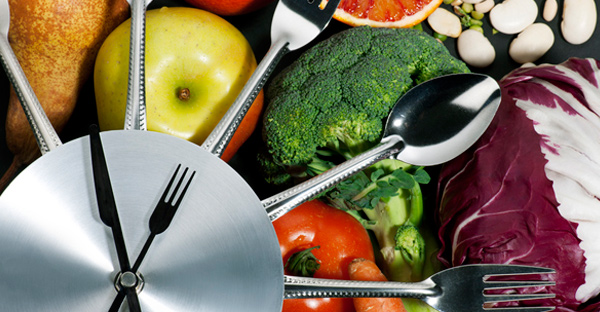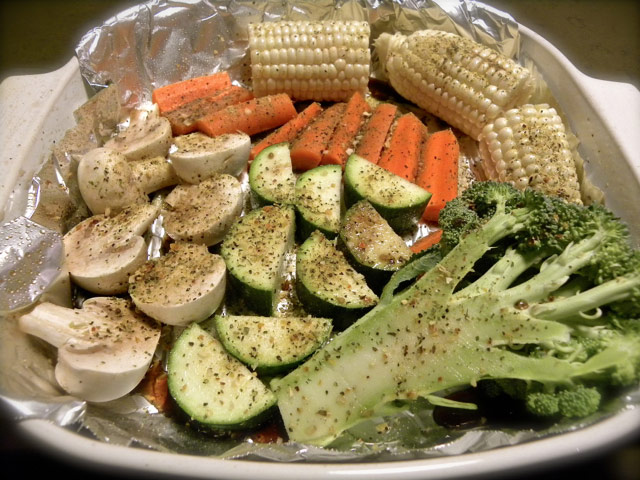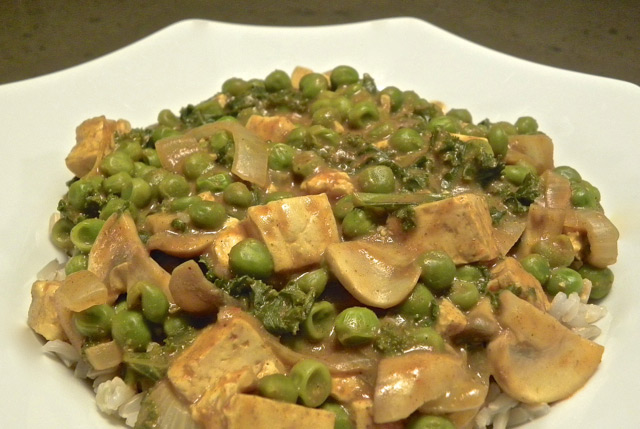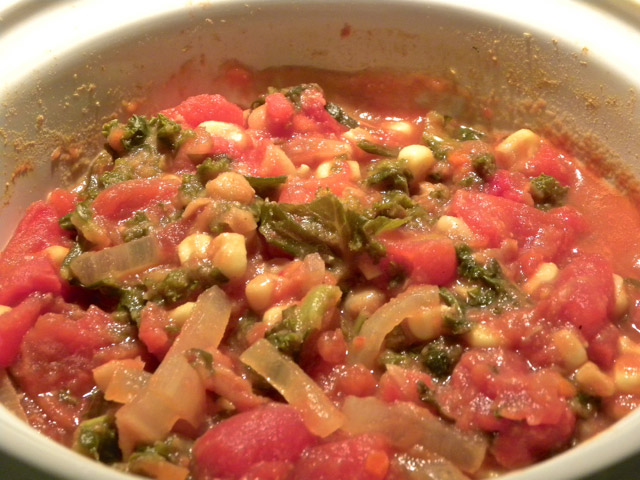

Many people on the edge of embracing a whole foods plant-based diet erroneously believe that it’s time-consuming to prepare healthy food. I’ve personally enjoyed being plant-based for over 14 years. While working long hours at NASA on two satellite missions and later on an organic farm, I developed some routine tips and tricks that served me well in maintaining a healthy lifestyle without spending too much time in the efforts.
This article is packed with time-saving tricks for enjoying a diet rich in salads, cooked vegetables, grains and beans. Before we dive in, here are 6 general plant-based cooking tips:
Save cut vegetables, skins, etc., in your freezer or refrigerator to make vegetable broth to add to soups, sauces, stews, or stir-fries. Making vegetable broth is easy in a slow cooker! Keep reading for my delicious and Simple Slow-Cooked Spicy Kale and Beans recipe.
Save leftover vegetable steaming water, marinades, and sauces, for use in soups and salad dressings.
When cooking grains, make extra to use in salads, stir-fries and soups. You can also make a big portion of grains and freeze serving size portions of the grains in plastic bags.
Canned beans save a lot of cooking time, but you should always rinse canned beans to reduce the amount of sodium in them.
Store extra cooked beans in freezer in plastic bags, small repurposed food containers (like the ones for hummus) or jars. It’s quick and easy to add small portions of frozen beans to soups, sauces, stews, and stir-fries.
Pureed cooked beans can be part of an excellent sauce for cooked vegetables and/or pasta, or in a salad dressing.
One of the most important changes I made in my diet decades ago was to incorporate more fresh salads into my food routine. Having a fresh salad (preferably every day) enhanced my overall vitality and fostered my stomach’s biome, helping me to be able to consume beans more often without undesirable side effects (!). Here are some ways to make it easier to eat more salads:
Quick Salad Trick #1: When not using pre-washed salad mixes, wash and spin-dry enough greens and lettuces for at least three days worth of use.
Store the greens in between paper towels in a suitable container or large plastic bag in the fridge. The greens will keep longer by remaining dry.
Quick Salad Trick #2: Wash, dry and cut enough raw vegetable toppings for three or four salads in advance and store each ingredient separately in sealable containers.
This can include summer squash, radishes, celery, and grated or sliced carrots. It’s easy to fall into the time sink of trying to prepare everything from scratch for each salad. By preparing ingredients all at once in advance, you can quickly assemble a salad in a few minutes.
Quick Salad Trick #3: Make your own oil-free dressing in a “spent” mustard bottle or other nearly-empty condiment container.
There weren’t many no-oil or no-fat salad dressing recipes available years ago, but now they are plentiful when searched for on the internet. And making your own is easy! In the lidded container you choose, add some vinegar (usually balsamic, maybe seasoned rice), a little garlic powder, maybe some nutritional yeast, sweetener of choice (can also blend some soaked raisins and add that to the mix), sometimes a little hot sauce, water or left-over broth (all added to taste). Close and shake the container vigorously until all is well blended. Make about a cup for the week. Adding different spices (curry, cumin, dried herbs, and so on) provides for variety and different taste experiences.
When I worked on an organic farm, the hours were long and quite physical, especially during harvest season. Believe me, the last thing I wanted to do after a 12 hour day in the field was spend a lot of time cooking. I took advantage of the abundant harvest in two ways: roasting vegetables and mastering quick stir-fries.
Vegetable Cooking Tip #1: Cut, coat, roast and add to a variety of dishes
I can’t think of any vegetable that can’t be roasted! Roasting concentrates the flavor of veggies in a marvelous way. I’ve even roasted okra (delicious) and cabbage (in large wedges, it’s delightful).
The technique is pretty simple:

Vegetable Cooking Tip #2: Stir fry vegetables in broth, layering vegetables according to density
Cooking without oil is easy when you know of alternatives. Vegetable broth, soy sauce, vinegar, water and other liquids can be used separately or in combination to replace oil.
Bonus tip: Layer sliced mushrooms above other vegetables so their juices will drip down to cook the other vegetables.

Invest in a slow cooker. Crockpots are quite inexpensive. With them you can prep most soups, stews, curries, and more, in 15 to 20 minutes prep, and let it cook while you are doing other activities. Prep a meal in the morning or during lunch. When you’re back from work, quickly prepare a salad, grains, baked potato, or pasta, to accompany the slow-cooked entree.
Here’s a Simple Slow-Cooked Spicy Kale and Beans recipe using my crockpot layering technique for a 1.5 qt. small crockpot:
In this layering technique, the liquid flows DOWN through the spices, heat, flavors the beans, and reduces the kale.

I hope that the above tips, tricks, and techniques, will help you relish and enjoy your journey towards incorporating fresh and delicious REAL food in your lifestyle, tantalizing your taste buds with nature’s best. A small investment in time and effort will yield great results and enable you to take full advantage of the amazing protective and restorative nature of a whole food, plant-based diet.
Copyright 2025 Center for Nutrition Studies. All rights reserved.